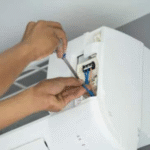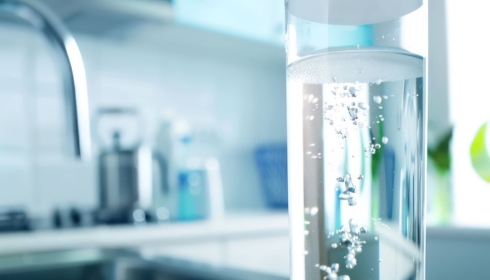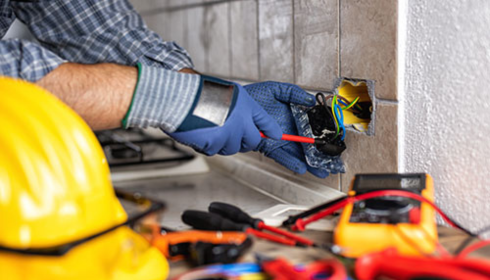It’s wild how much we rely on water. We drink it, cook with it, shower in it, wash our dishes and clothes—heck, we water our plants with it and fill baby bottles from it without a second thought. But here’s a question: when’s the last time you actually checked what’s in your water?
If your answer is somewhere between “never” and “I think the city handles that,” you’re not alone. Most homeowners assume their water is clean simply because it looks clear and doesn’t smell weird. And while that assumption works most of the time, it’s not exactly foolproof. That’s where water testing comes in—and no, it’s not just for rural homes with private wells.
Water Looks Clean. So What’s the Big Deal?
Here’s the not-so-fun truth: just because your water looks clean doesn’t mean it is clean. Contaminants like lead, nitrates, arsenic, PFAS (yep, the so-called “forever chemicals”), and bacteria don’t announce themselves with color or odor. They sneak in quietly—through old pipes, groundwater runoff, local infrastructure mishaps—and you may never notice until someone in your home starts experiencing symptoms.
And those symptoms? They vary. Digestive issues. Skin irritation. Metallic taste. Hair that just won’t cooperate. Appliances that break down faster than expected. Ever get unexplained limescale buildup or rusty streaks in your tub? That’s your water trying to send a message.
What Exactly is a Home Water Test?
So let’s break it down. A home water test is basically a report card for your water. Depending on how thorough you want to be, you can check for everything from basic pH and hardness to chlorine, bacteria, heavy metals, and beyond.
There are DIY kits you can buy online or at your local hardware store. These usually involve test strips or color-change vials that you dip into a water sample. They’re quick, inexpensive, and great for basic readings—like how hard or soft your water is.
But if you want the whole story? A professional test is the way to go. Certified labs can give you a much more comprehensive readout, often with recommendations tailored to your area and plumbing setup. Think of it as the difference between checking your temperature with your hand versus using a digital thermometer. Both work… but one is way more accurate.
When Should You Test Your Water?
Ah, timing. Another piece that gets overlooked. People tend to test water only when there’s a problem. But that’s like waiting until your engine light is blinking red before you check your oil.
Here are a few scenarios when testing makes total sense:
- You’ve just moved into a new home
- Your home relies on a private well
- You notice a change in taste, smell, or appearance
- You’re pregnant, have a newborn, or someone in the house has health sensitivities
- You’ve recently installed new plumbing or filtration systems
- You live in an area with known contamination concerns
Even if none of these apply, an annual checkup isn’t a bad idea. It’s just smart maintenance—like getting your HVAC serviced before winter.
What Happens If the Test Finds… Something?
Okay, say your test shows elevated levels of something concerning. What then?
First off—don’t panic. The good news about water quality testing is that it gives you knowledge, and knowledge gives you control. Most water problems have fairly straightforward solutions.
Got hard water? A softener can help.
Too much chlorine? An activated carbon filter does the trick.
Bacteria? A UV purifier might be the answer.
Lead or heavy metals? A reverse osmosis system can make your water safer and cleaner than ever.
The point is, you’re not powerless. Once you know what’s in your water, you can do something about it.
Don’t Forget About “Safe” Levels
One thing to remember—just because a contaminant is “within safe limits” doesn’t always mean you’ll want to live with it. Regulatory limits are based on population-wide safety standards, but every person (and every household) is different. Pregnant women, kids, immunocompromised individuals—they may need water that’s cleaner than what’s considered legally acceptable.
So while the local water report might say you’re all good, your own test can tell a different story.
So… Is This One of Those Things You’ll Regret Not Doing?
Yep. It’s kind of like insurance: not exciting, but when you need it, you’re really glad you had it. And honestly, there’s something pretty empowering about understanding your home’s water profile. You’ll make smarter decisions about filters, save money on bottled water, and avoid guessing games with mystery odors or soap that won’t lather.
Not to mention the peace of mind that comes from knowing your water is actually working for you—not quietly causing problems behind the scenes.
Final Sip
At the end of the day, water testing, home water test, water quality testing—whatever you want to call it—isn’t just for “problem” homes or people with wells in the middle of nowhere. It’s for anyone who cares about their health, their plumbing, and their peace of mind.
So go ahead. Test your water. It’s a small step that can make a huge difference—and once it’s done, you’ll wonder why you waited so long.



























+ There are no comments
Add yours